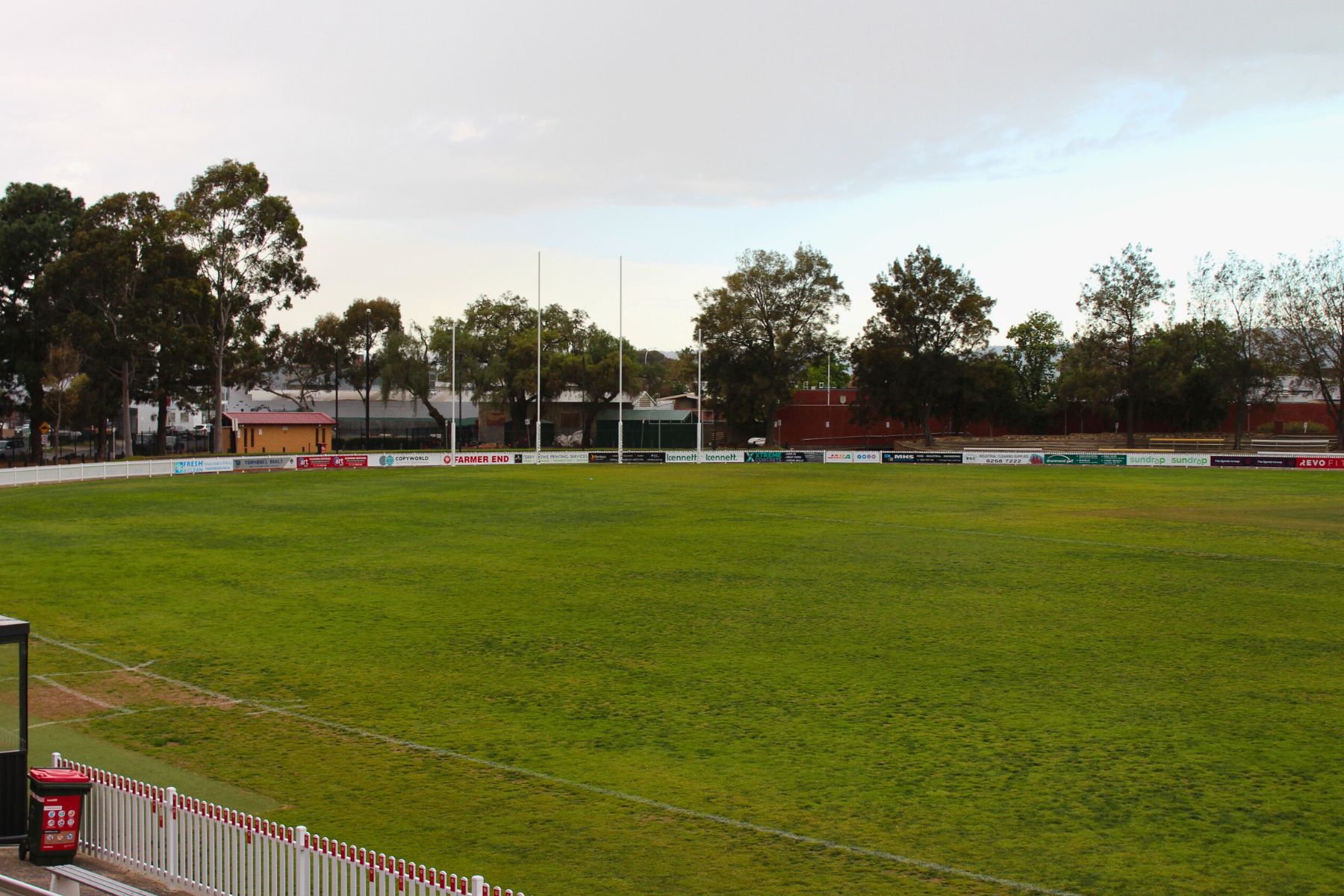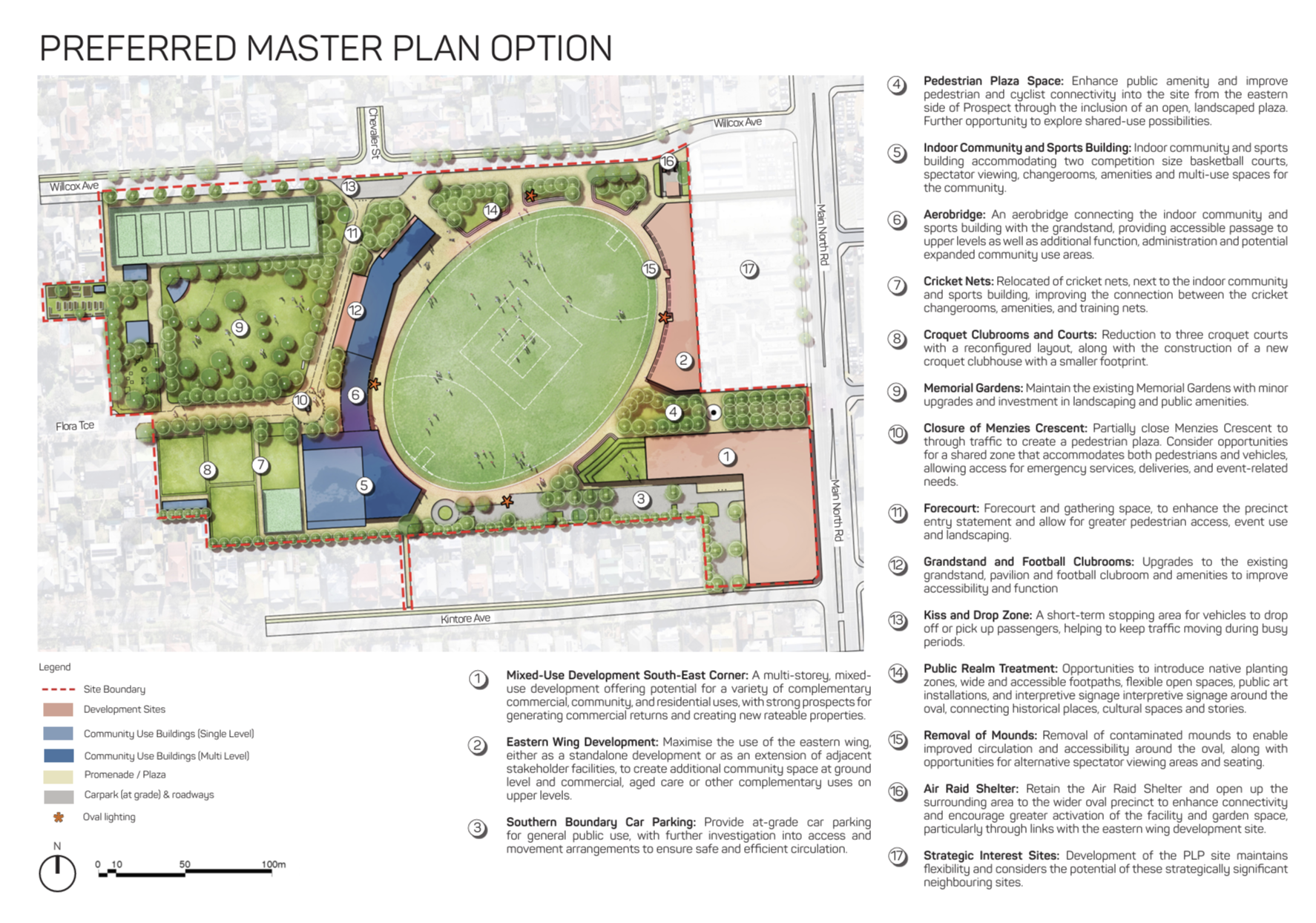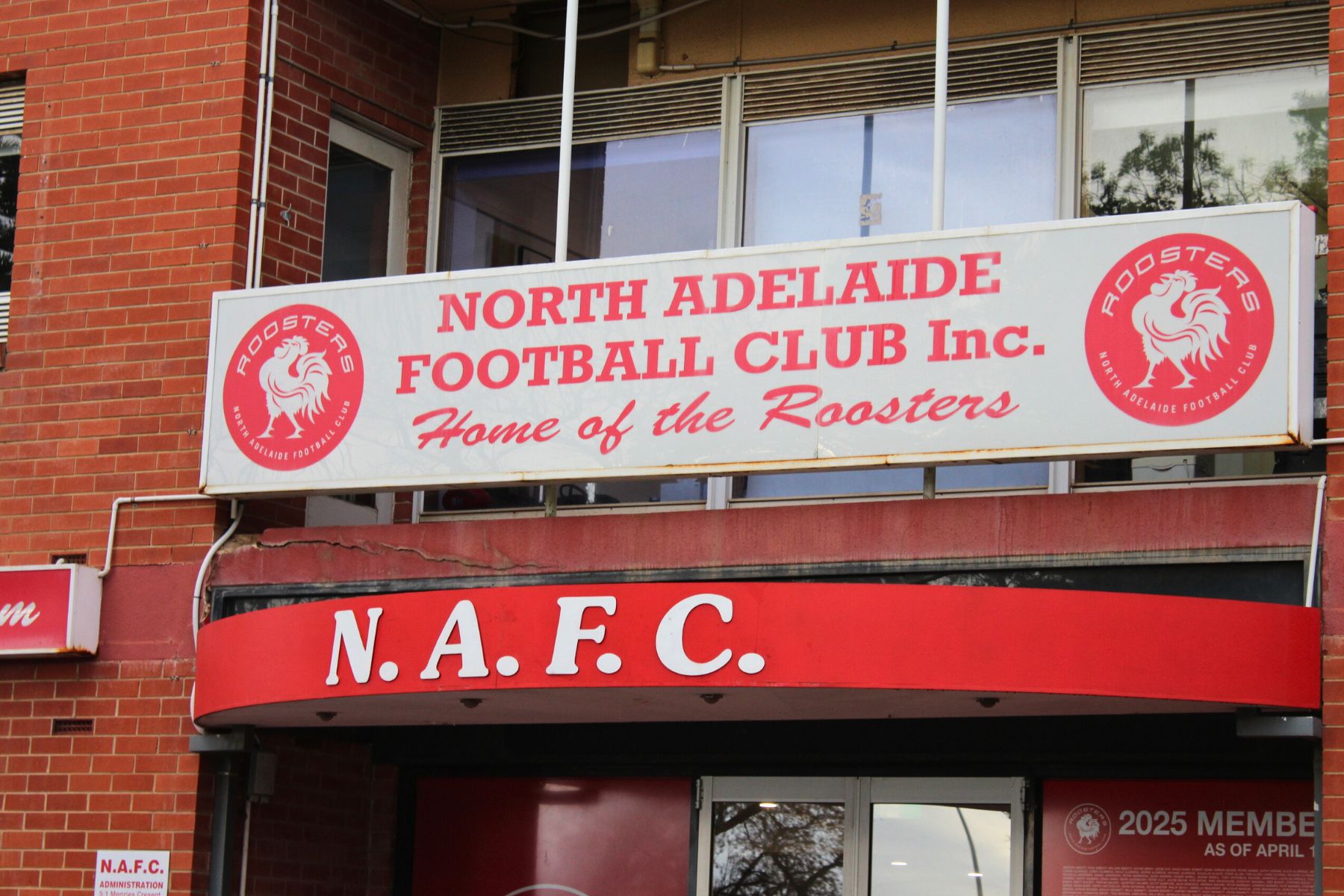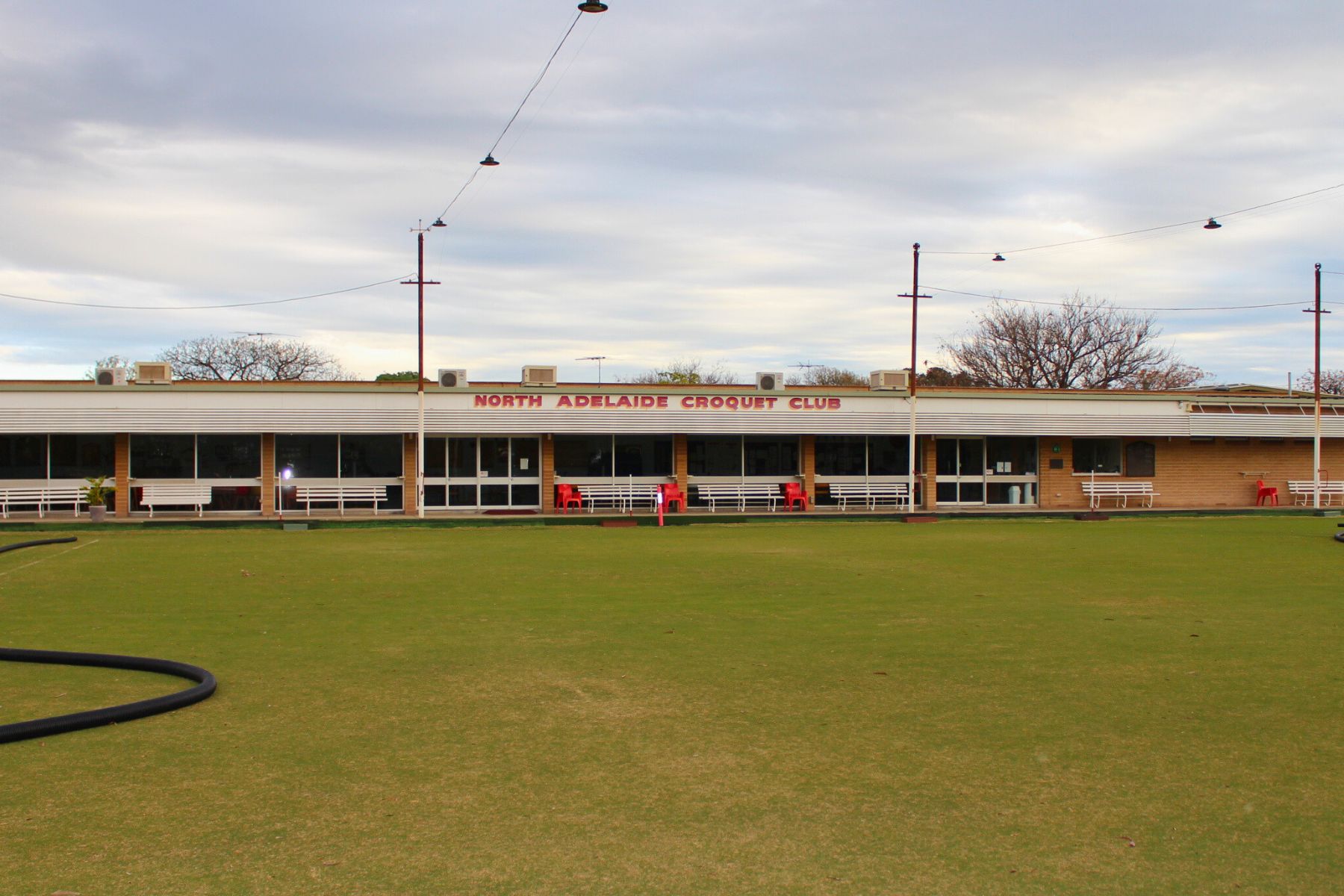Not just a perimeter fence: Prospect Oval plans ‘next big thing’
“In 1980, Prospect Road was where you’d get used mattresses and gun shops.” Now it’s a cosmopolitan strip, and Mayor Matt Larwood is setting his ambitious sights on Prospect Oval and its surrounds.

Dubbed a “once-in-a-generation” project to revitalise Prospect Oval, the local council hopes to add a large new multi-purpose facility, build new facilities for local sporting groups and partner with external developers to build a new residential hub on the edge of the precinct.
It’s an ambitious plan, with many moving parts, multiple different developments and builds, and – as most local government projects go – concerned residents at the centre.
The City of Prospect’s goals for the oval go further than simply a perimeter fence, which as history shows with Unley Oval is enough to attract the ire of local residents.
The multimillion-dollar plan – estimated to cost around $60 to $70 million – would refresh a part of Prospect that sits at the heart (and the geographical centre) of the city, and with easy access to Main North Road.
These factors are turning into what Mayor Matt Larwood said was the city’s most extensive community consultation process to date.
Larwood would know too. He’s a nearly life-long resident of Prospect and joined the council more than a decade ago.
Sitting in the Prospect Oval stands, the Mayor told InDaily the redevelopment would take advantage of renewed interest in the area, sparked by a changing Prospect Road that’s been attracting some of the top local businesses, eateries, and entertainment facilities.
“In 1980, Prospect Road was where you’d get used mattresses and gun shops. Maybe the odd pizza bar,” Larwood said.
“David O’Loughlin – the previous Mayor – fought hard for a big vision, not just small.
“He worked with the state government to rezone the urban corridors, which fits in with the urban infill policy. We want to be able to go up higher on Prospect Road, Main North Road and Churchill Road.
“But we exchanged that for tighter controls in the side streets to hold onto the heritage and the history that we love so much.”
Churchill Road is now no longer the “road to the tip”, he said.
“If you said to 1980 Matt – do you think that would happen? The answer would be ‘no way’,” he said.
You might like
“This is the next big thing.”

The Prospect Lifestyle Precinct Masterplan was endorsed in June 2025 by the council. It provides a roadmap for the project, featuring new community and recreation facilities for the Prospect RSL, Prospect District Cricket Club and the North Adelaide Croquet Club.
There are effectively 17 different elements within the larger project for the oval. This ranges from the cornerstone building – the indoor community and sports building at the southwestern end of the oval – to the construction of an aerobridge connecting that building with the grandstand.
Other projects include enhancing the amenities of already existing parts of the land like the Memorial Gardens, relocating the cricket nets and upgrading the grandstand and football clubrooms.

Other plans to revitalise the oval have been discussed by the council in the past.
“They were full of great ideas, but the problem was that there was no way to fund them,” Larwood said.
“What we can’t really do is put rates up for a significant amount for a long period of time.
“So therefore, the idea of some commercialisation to help fund what we have to do was a reality that we could genuinely consider.”
The council is hoping that the revocation of community land on the eastern boundary of the oval area and at the corner of Main North Road and Kintore Avenue will give it the funds it requires to deliver the ambitious plan.
External developers – not the council – would build on those parcels: “We’ll go into a partnership with people who do that for a living”.
“But the way we’ve set it up, and the way we’ll structure the expressions of interest, we will have as much control as possible,” he said.
“I want that to exemplify Prospect.”

While he won’t dictate what will take over those sites, he said it could be housing for the ageing local population “who don’t want to leave Prospect, but maybe they’re sitting on 750 sqm, five bedrooms, a living room, a lounge room and a large yard”.
It could also include things like gyms, hydrotherapy pools, cafes, a boutique supermarket, Larwood saying nothing is off-limits.
“I’d like to see something which was designed to be in-keeping with the environment and to really activate that whole space, which is really under utilised at the moment and there’s not much you can do there except sit there on Saturdays 10 times a year uncomfortably and watch football,” he said.
“There’s always been a desire since I’ve been on council to turn Main North Road into much more than just car yards.”
This will be the third round of community consultation the council has embarked on to date for this massive project.
Stay informed, daily
The initial two phases of community consultation informed the development of the Master Plan.
“We did more public consultation than anyone has ever done in the entire history of man,” laughed Larwood.
| Sponsored |
Phase two in particular attracted the participation of 735 people, and found there was strong support for preserving and enhancing green open space, but opposition to the proposed new indoor sports and community building, particularly from those with ties to the North Adelaide Croquet Club, was evident.
Under the endorsed Master Plan – finalised post-phase two – the croquet fields will be reduced to three croquet courts. The clubhouse will be knocked down and made smaller too.
“Croquet was one of the most discussed elements within the Phase 2 consultation,” the Phase 2 consultation report reads.
“There was a significant surge in feedback from croquet players, club affiliates, and residents, indicating a concerted push by some cohorts to preserve all four lawns.
“The consistency in the responses’ format and content suggests these stakeholders may have worked together in shaping their submissions.
“Many respondents strongly opposed any reduction in the number of croquet courts, stressing that maintaining all four courts is crucial for the club’s ongoing viability and its ability to host national and international competitions.”

The croquet club campaign has tones of the debate that surrounded the Unley Council’s move to install a perimeter fence around its community asset: the Unley Oval.
In August, after a year of deliberation, the Unley Council moved forward on plans to build a fence around the oval.
Debate was described as “divisive”, and a petition was handed to council with 1587 valid signatures asking the city not to go ahead – just a small percentage of the Unley’s estimated population of about 40,000 residents.
Councillor Chris Crabbe, the most vocal on the council against the construction of a perimeter fence, attempted to move a motion whereby no fence would be built.
“It has pitted neighbour against neighbour, residents against club members, and frayed the very sense of community we as councillors are meant to nurture.
“That damage to the social fabric is real, and it should weigh heavily on us before we decide to push ahead.”
Larwood said the Croquet Club and residents along Kintore Avenue have been “most vocally against” the Master Plan.
“Consulting isn’t about hearing what you want to hear,” he said.
“It’s about getting the views of people and gathering their ideas.
“Consulting is doing your due diligence, and it’s about harnessing the community’s collective thinking and getting their good ideas and adding them to the mix. There’s many, many things that we’ve heard from the community that we’ve adopted and taken on board.”
He said one issue with consultation processes is silence from the vast majority of the population – “does that mean someone’s okay with it?”.
“There was a significant proportion of the people who responded, who responded negatively,” he said.
“You could say that represents 0.1 per cent of the community, and therefore, if 0.1 per cent of the community were partly or fully against it, how should you consider the other 99.9 per cent of the community? Should you consider them ambivalent?
“You don’t ring up SA Water every day and say thanks for making sure there’s water coming. But if the water stopped, you would ring them up.
“But it pushes our thinking. It makes us really reflect on what we’re doing, and we hope to make the right decision for most of the community. There are going to be some people in the community who, no matter what we did or didn’t do, would say we’ve done a bad job. We just have to accept that and cop it on the chin.”
With the third phase of consultation under way, there’s still some time to go until anything meaningful happens at Prospect Oval.
“But I suspect we’ll have some deals locked in place in some way shape or form, and be very close to doing some things in the next 12 months,” Larwood said.









